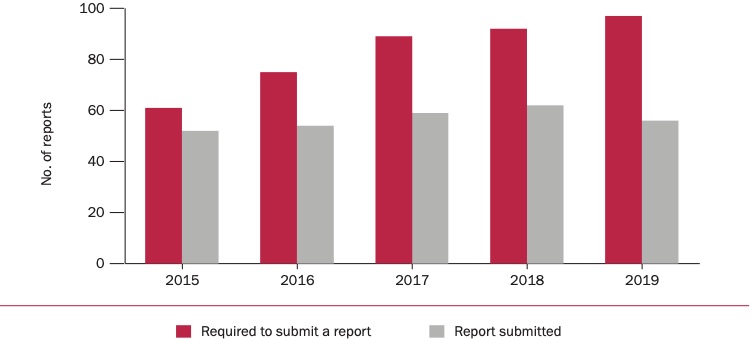14. Dual-use and arms trade controls
Overview, Andrea Edoardo Varisco [PDF]
I. The Arms Trade Treaty, Andrea Edoardo Varisco, Giovanna Maletta and Lucile Robin [PDF]
II. Multilateral arms embargoes, Pieter D. Wezeman [PDF]
III. The multilateral export control regimes, Kolja Brockmann [PDF]
IV. Developments in the European Union’s dual-use and arms trade controls, Mark Bromley, Kolja Brockmann and Giovanna Maletta [PDF]
Global, multilateral and regional efforts continued in 2020 to strengthen controls on the trade in conventional arms and in dual-use items connected with conventional, biological, chemical and nuclear weapons and their delivery systems. Membership of the different international and multilateral instruments that seek to establish and promote agreed standards for the trade in arms and dual-use items remained stable. However, there were growing signs that
the strength of these instruments is being increasingly tested by stretched national resources and broader geopolitical tensions. This could be seen in the decrease in reporting to the 2013 Arms Trade Treaty (ATT); the various reported violations of United Nations arms embargoes; and unilateral efforts by the United States to impose a UN arms embargo on Iran beyond 2020.
The Arms Trade Treaty
The Sixth Conference of States Parties to the ATT was conducted in August 2020 through written procedure with no in-person meeting. In addition to Covid-19-related disruption, some problems that the ATT was already experiencing persisted, particularly shortfalls in compliance with mandatory reporting and a decline in the number of publicly available reports. The two main developments were the establish-ment of the Diversion Information Exchange Forum and the accession of China to the ATT.
Number of Arms Trade Treaty states parties submitting annual reports, 2015–19

Multilateral arms embargoes
During 2020, 13 UN embargoes, 21 Euro-pean Union (EU) embargoes and 1 League of Arab States embargo were in force. No new multilateral arms embargo was imposed and the UN embargo on the supply of major arms to Iran and exports of any arms from Iran expired, although other aspects of the embargo remained in place. Ten of the EU arms embargoes matched the coverage of those imposed by the UN; three were broader in terms of duration, geo-graphical scope or the types of weapon covered; and eight had no UN counterpart. The single Arab League arms embargo, on Syria, had no UN counterpart. 2020 was a testing year for multilateral arms embar-goes: the USA sought to unilaterally extend the UN arms embargo on Iran beyond October 2020; as in previous years, investi-gations by the UN revealed numerous reported cases of violations, most notably with regard to the UN arms embargo on Libya; and the armed conflict between Armenia and Azerbaijan raised questions about the implementation and enforcement of the Organization for Security and Co-operation in Europe’s voluntary arms embargo on Nagorno-Karabakh.
Export control regimes
None of the four multilateral export control regimes—the Australia Group (on chemical and biological weapons), the Missile Technology Control Regime, the Nuclear Suppliers Group, and the Wassenaar Arrangement on Export Controls for Conventional Arms and Dual-use Goods and Technologies—was able to hold an annual plenary due to Covid-19 pandemic restrictions. Several regimes put in place measures or expedited processes to improve resilience in addressing the types of challenge raised by Covid-19. None of the four regimes admitted any new participating states (or partners) during 2020.
EU controls
To implement the four export control regimes in its common market, the EU has established a common legal basis for controls on the export, brokering, transit and trans-shipment of dual-use items, software and technology as well as, to a certain degree, military items. In 2020 the EU reached a provisional agreement on the final text of a new version of the EU Dual-use Regulation, concluding a review and recast process that started in 2011. It also improved the level of transparency and accessibility of the EU Annual Report on arms exports.